In the dynamic field of corporate sustainability, businesses require powerful tools to foresee and address upcoming challenges. Scenario modeling and scenario analysis are essential functions within sustainability software that enable organizations to predict and plan for various future states. By incorporating Scope 1 emissions into these analyses, businesses can achieve a comprehensive understanding of their environmental impact and develop effective strategies to mitigate it.
Understanding Scenario Modeling and Scenario Analysis
Scenario modeling involves creating detailed representations of potential future events based on various assumptions and data inputs. This technique allows organizations to explore different outcomes and identify the potential impacts of various strategies and decisions.
Scenario analysis takes this a step further by evaluating the different scenarios generated through modeling. It involves comparing and contrasting these potential futures to determine the best course of action, helping businesses prepare for uncertainty and change.
Together, these tools provide a powerful means for organizations to navigate the complexities of sustainability, particularly in the face of climate change and regulatory pressures.
Why Scenario Modeling and Analysis Are Crucial for Sustainability?
- Risk Management: By anticipating a range of potential future events, businesses can better prepare for risks, reducing the likelihood of unforeseen challenges derailing their sustainability efforts.
- Strategic Planning: Scenario analysis helps organizations identify the most effective strategies to achieve their sustainability goals, aligning efforts with long-term objectives.
- Regulatory Compliance: With increasing regulatory requirements related to sustainability, scenario modeling and analysis enable businesses to stay ahead of compliance needs, avoiding penalties and enhancing their reputation.
- Resource Allocation: These tools help companies allocate resources more efficiently, ensuring that investments in sustainability yield the greatest possible returns.
Incorporating Scope 1 Emissions into Scenario Analysis
Scope 1 emissions refer to direct greenhouse gas (GHG) emissions from sources owned or controlled by an organization, such as fuel combustion in company-owned vehicles and facilities. Integrating Scope 1 emissions into scenario modeling and analysis is critical for several reasons:
- Accuracy: Including Scope 1 emissions ensures that the scenario models accurately reflect the company’s direct environmental impact, providing a realistic baseline for future planning.
- Regulatory Requirements: Many regulatory frameworks require companies to report their Scope 1 emissions. Incorporating these into scenario analysis helps businesses stay compliant and prepare for future regulations.
- Impact Assessment: Understanding the direct emissions impact of different scenarios allows companies to develop targeted strategies for emission reduction, aligning with sustainability goals.
Hydrus’s Approach to Scenario Modeling and Analysis
Hydrus integrates sophisticated technologies to enhance scenario modeling and analysis, providing companies with powerful tools to improve their sustainability practices. Here’s how Hydrus leverages these capabilities:
Comprehensive Data Integration
Hydrus’s platform excels in integrating diverse data sources, crucial for accurate scenario modeling. The software can aggregate data from:
- Internal systems such as ERP and CRM
- External sources including regulatory databases and industry benchmarks
- Real-time data feeds for continuous updates
This comprehensive data integration ensures scenario models are built on the most complete and current information, providing a solid foundation for decision-making.
Incorporating Scope 1 Process Emissions in Scenario Modeling
- DRE Protocol Integration Hydrus.ai integrates specific protocols for Measuring Destruction or Removal Efficiency (DRE) of Fluorinated Greenhouse Gas Abatement Equipment directly into the modeling framework. This includes accommodating variations in DRE based on the production process, the type of gas used, and the specifics of each manufacturing site.
- Customizable Emissions Factors The platform allows for customization of emissions factors and abatement efficiencies according to site-specific data and regulatory requirements, ensuring accurate and compliant emissions reporting.
Scenario Analysis for Projected Growth
- Expansion Modeling Hydrus.ai can model scenarios including the addition of new fabrication facilities and the expansion of the manufacturing footprint. By integrating planned expansion data into the platform, Hydrus enables the simulation and analysis of the environmental impact of potential expansions.
- Growth Projections The software models projected growth over 5 or more years using available data and input scenarios. This includes long-term decarbonization plans, aligning with sustainability goals and compliance requirements.
Addressing Non-Linear Changes
- Multi-Year Variables Hydrus.ai supports the modeling of variables that do not change linearly but depend on multi-year trends and external factors. The platform incorporates complex algorithms to predict and visualize impacts based on these non-linear variables, aiding in more accurate long-term planning and decision-making.
- Adaptive Modeling Tools The software includes tools that adjust to sudden changes or gradual shifts in environmental impacts, considering factors like technological advancements, regulatory changes, and market dynamics.
Conclusion
Modeling functionality is crucial for software as it allows businesses to simulate and predict outcomes based on various inputs and scenarios. Scenario modeling and analysis are essential for companies to understand and manage their Scope 1 emissions. By leveraging scenario modeling, companies can assess the impact of different operational strategies, regulatory changes, and market conditions on their emissions. This helps in identifying effective mitigation measures, optimizing resource allocation, and ensuring compliance with environmental regulations. Accurate scenario analysis enables businesses to make informed decisions, reduce their carbon footprint, and achieve sustainability goals.



